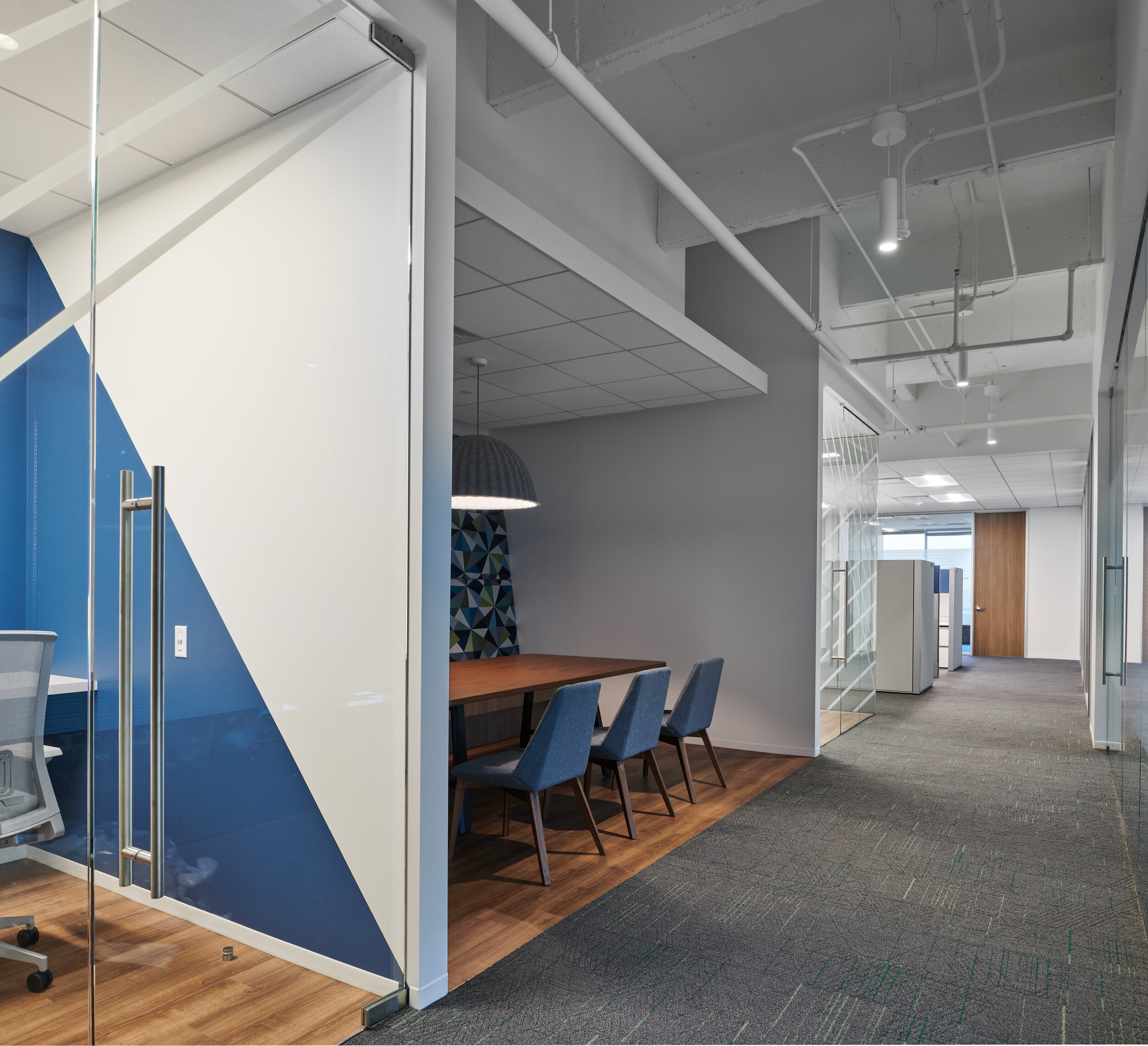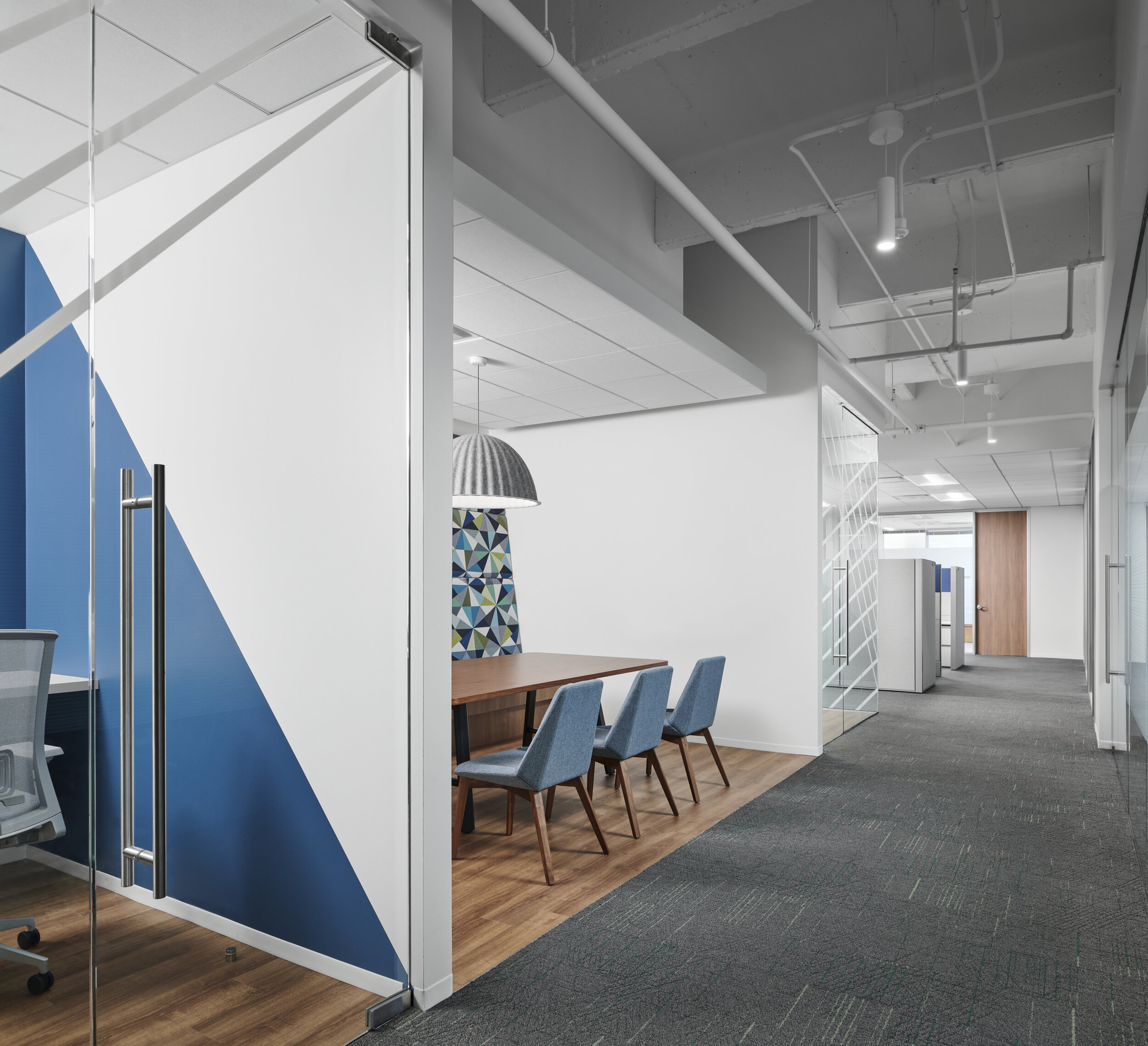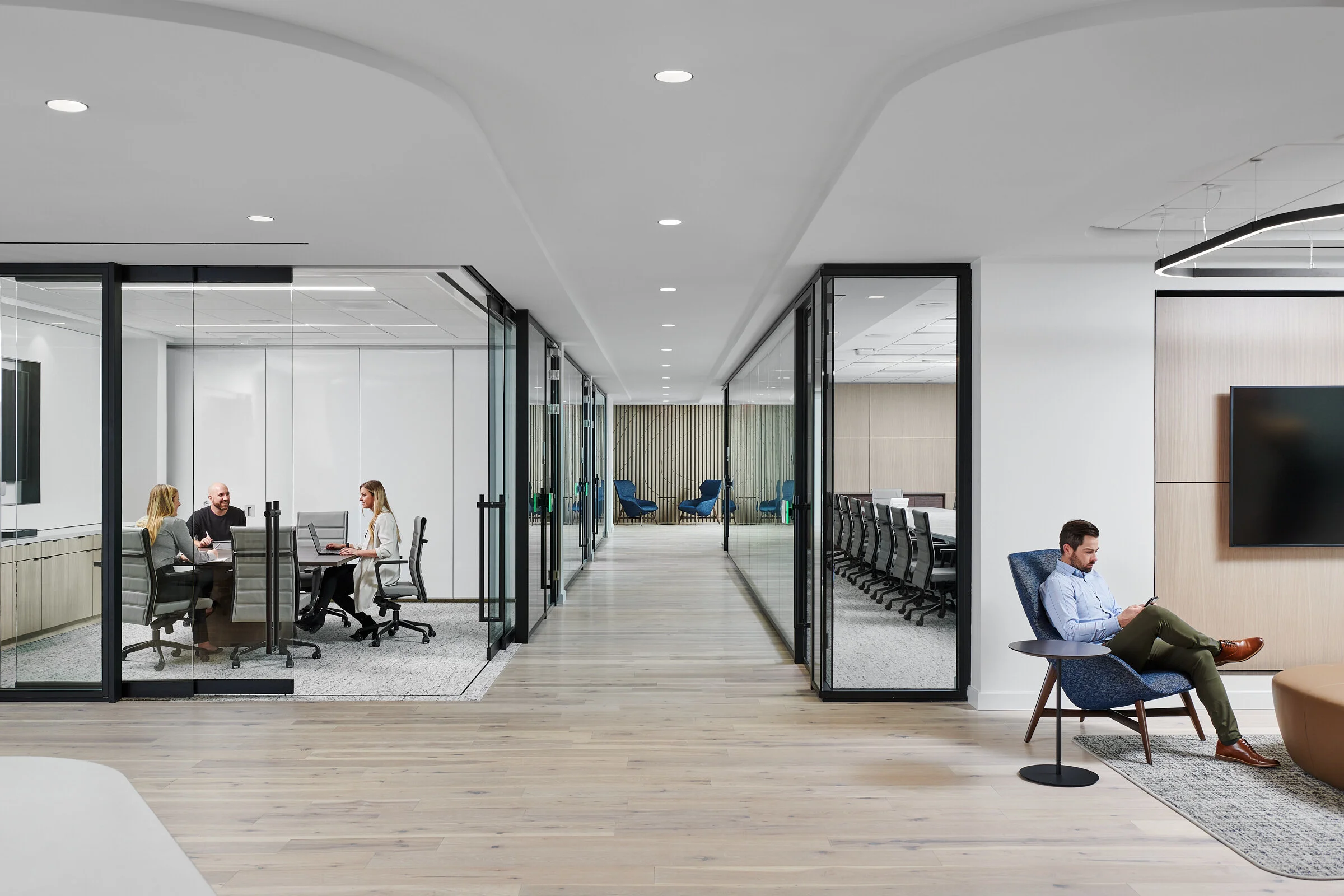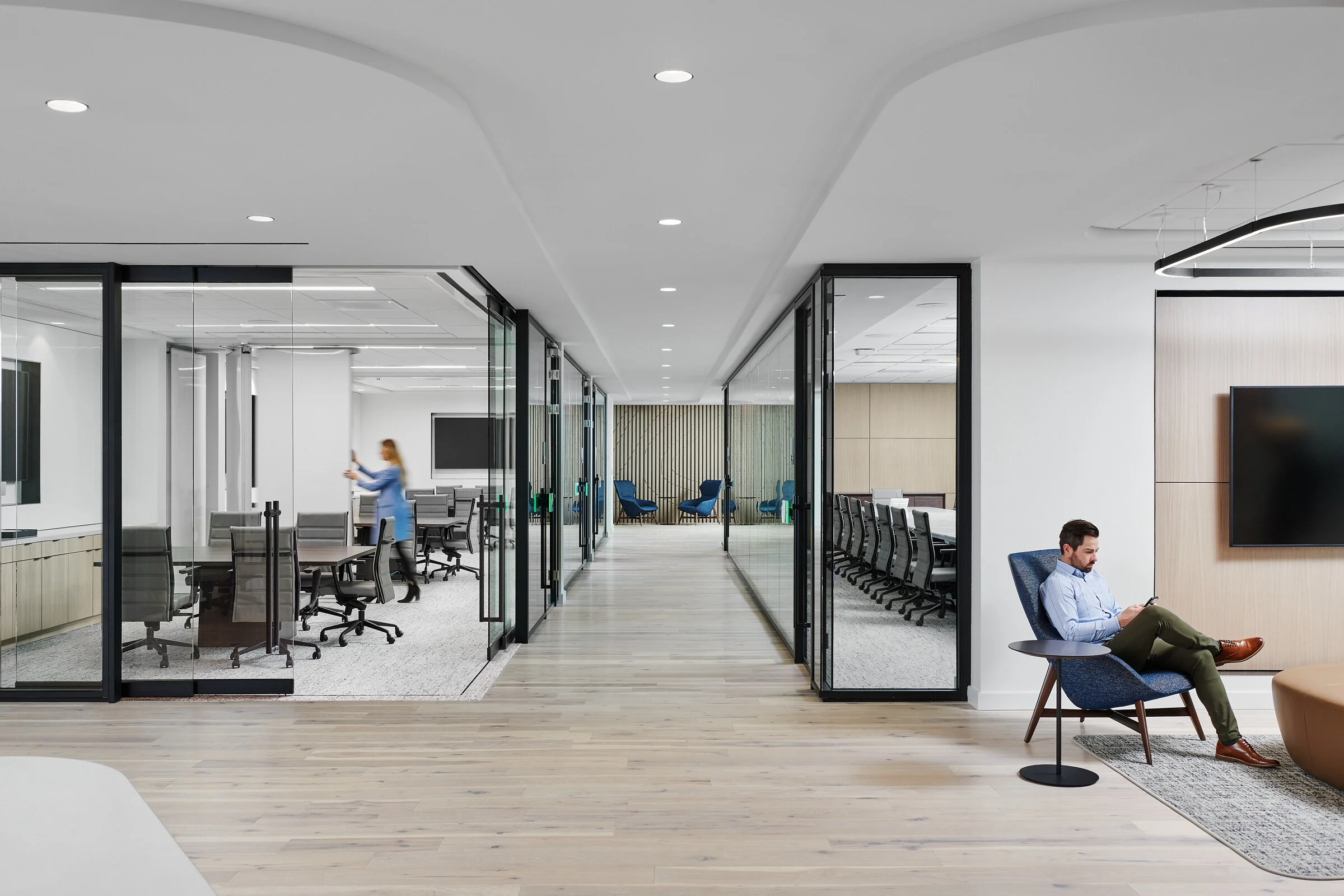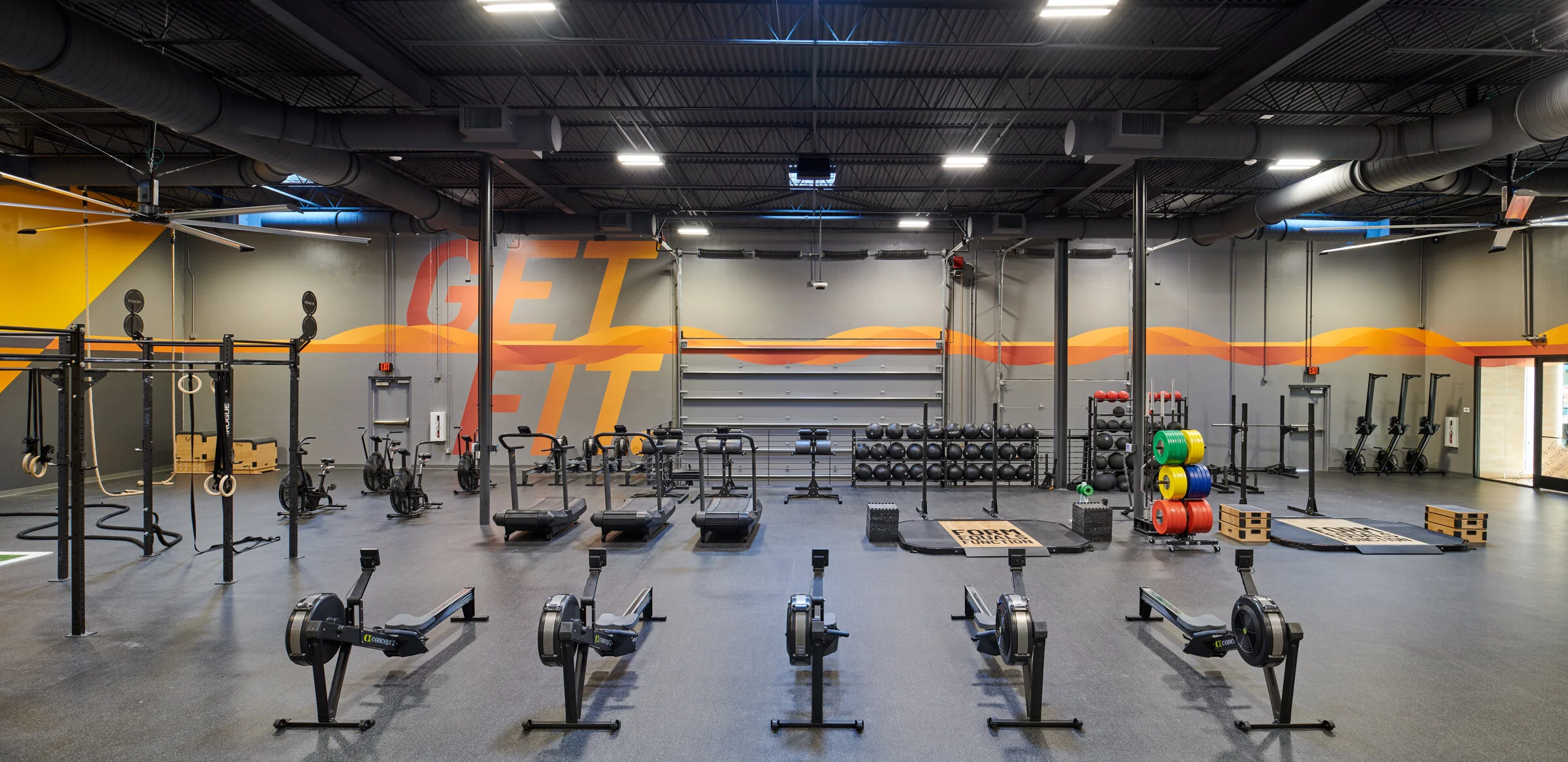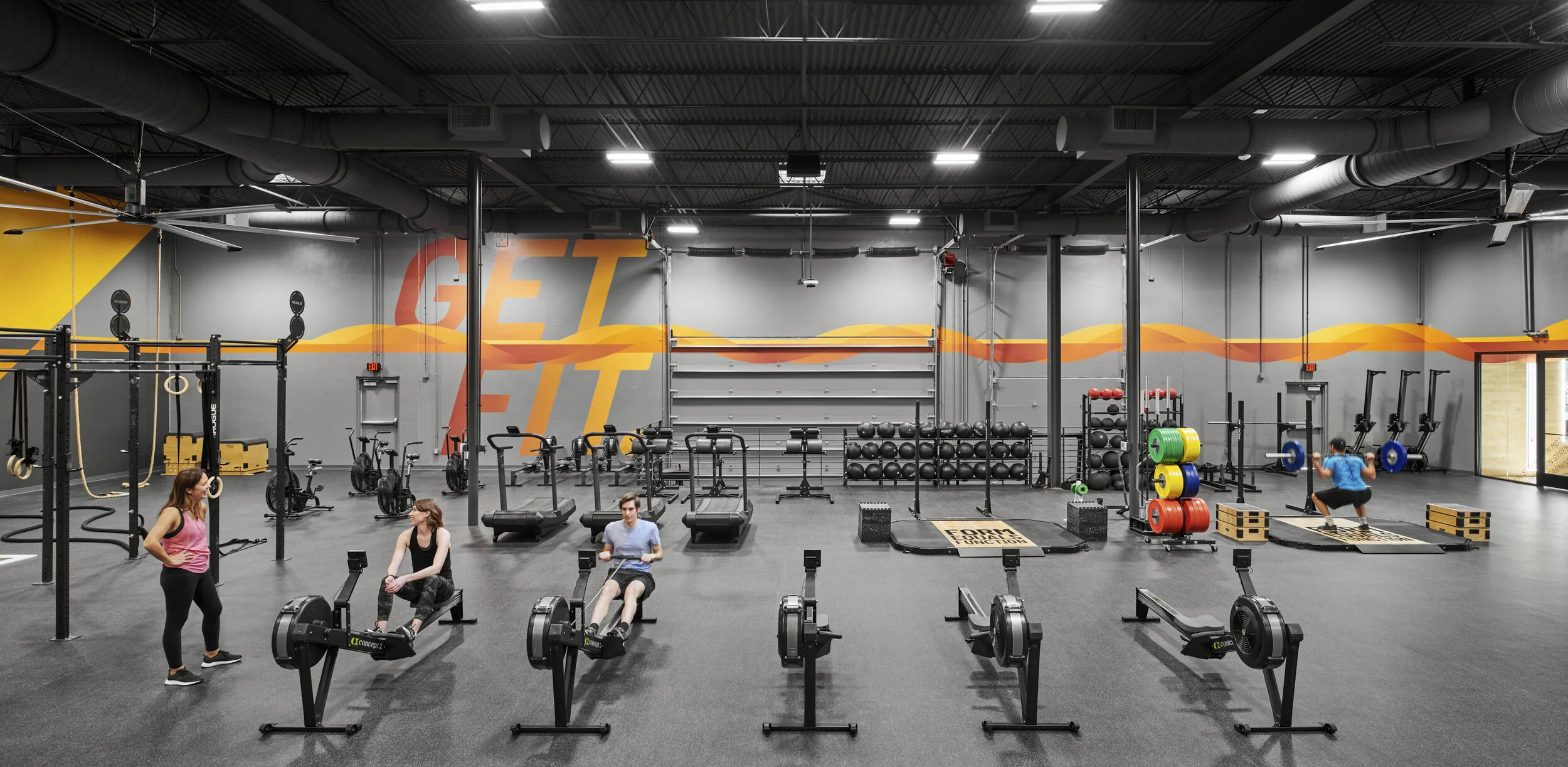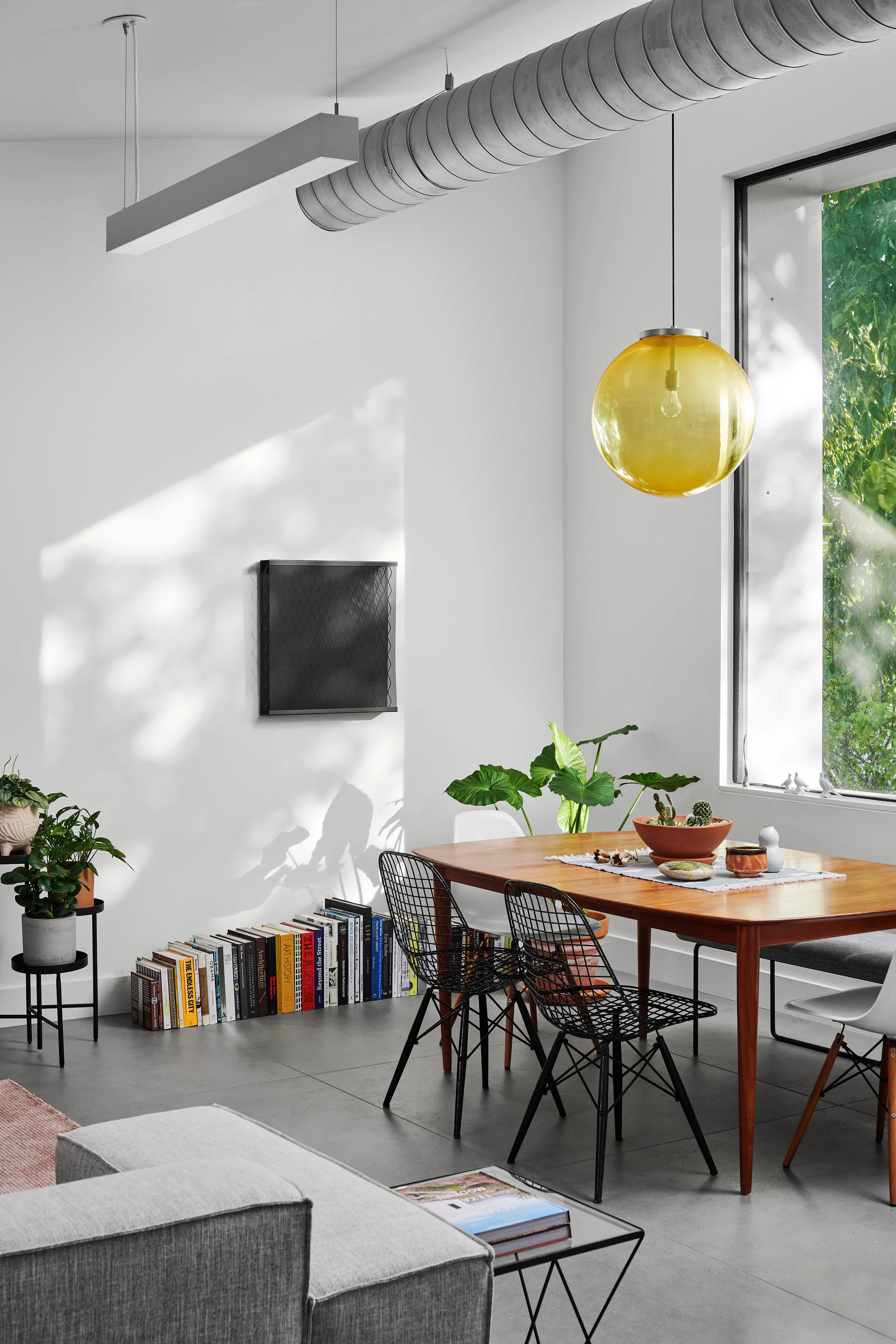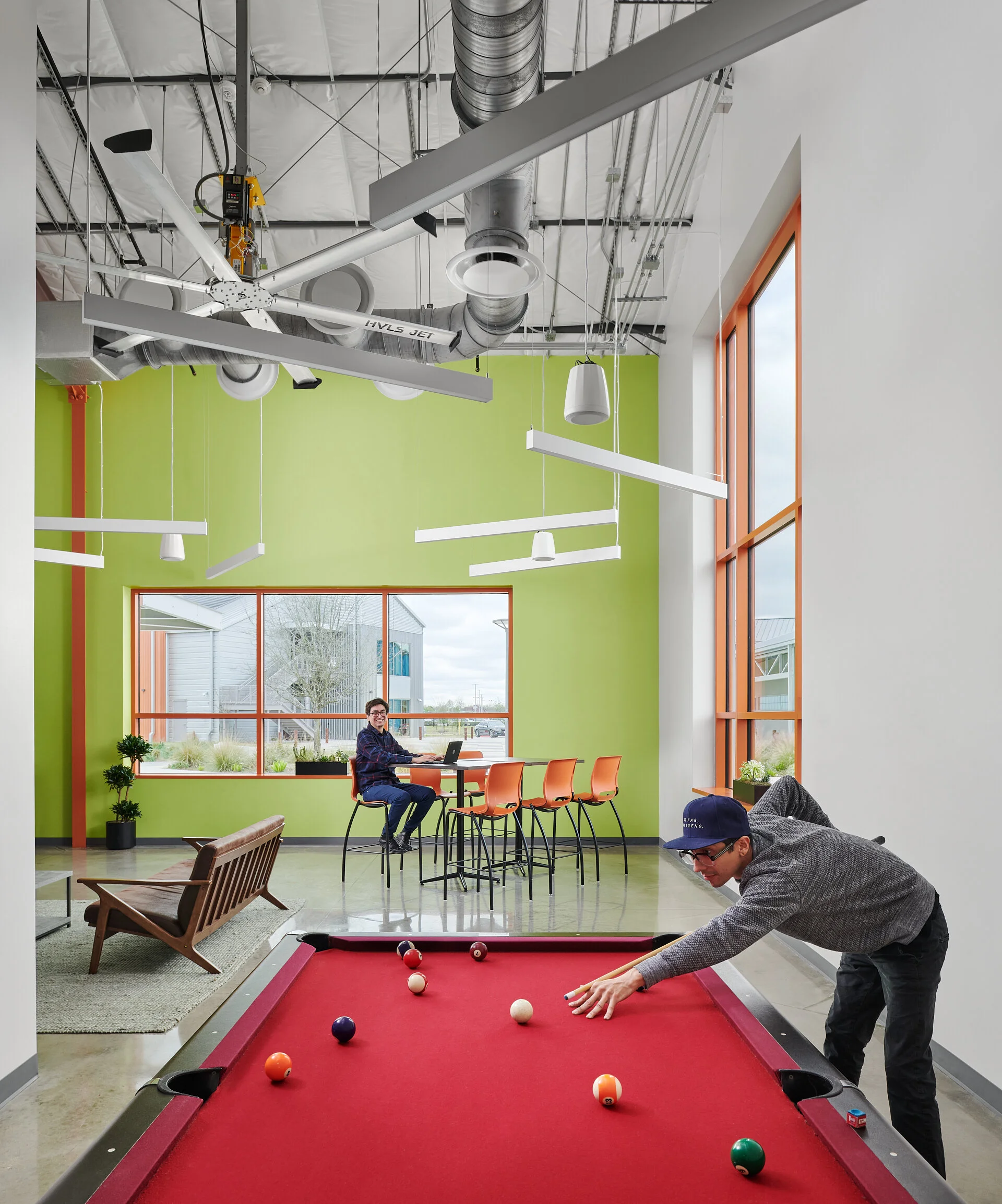Every composition when shooting workplace interiors comes with a unique set of challenges. Reflections, varying color levels and temperatures, malfunctioning building systems and more are often things we have to overcome in order to convey the overall design intent and vision. In the image below, we were tasked with showing a fairly complex space located at the end of an office space that contains a variety of spaces - two phone rooms, an open breakout space, work stations, offices and an adjacent conference room - WHEW. To make things even more tricky, lighting levels between the spaces were very inconsistent, particularly the central breakout space which was only lit with one large pendant, making it appear quite dark in an image with available light compared to the corridor and adjacent rooms. And on top of everything, I wanted to capture all of these spaces in one image in order to show their connectivity, so opted to do a vertical stitch using my 24mm tilt shift lens to help illustrate the open ceiling of the corridor.
When approaching a shot like this that joins multiple spaces which all could benefit from supplemental lighting, my instinct is generally to treat them individually, with an overall plan to combine them strategically in post. To begin with this strategy, I first run through a round over ambient frames in order to capture things as they are. From here we begin shooting each individual space with supplemental lighting at a fast enough shutter speed to regulate any ambient light that we could not control. Once this has all been captured, all that’s left to do is to jump into the computer to piece it all together, which is where the video below picks up.
As with most of my interiors shots created in this way, I first run through some quick RAW processing in Capture One to get each frame that will be used dialed in at the levels and white balance that I want including one frame specifically for the ceiling information which I spend a little more time on ensuring that the white ceiling doesn’t have any color contamination. From here I move into Photoshop, run a script I’ve got to auto merge and align the images, and can begin the exposure blending, color corrections and retouching. Since beginning to share these processing videos, I am frequently asked about the time it takes to do this work in post and the value of it. This image took 50 minutes from start to finish in the computer. As for the value, all I can say is that with time, I feel that I have become very efficient in the way I go about both my post-processing and shooting on site and think that with some practice, these things can take far less time than they may first appear. Workplace interiors and similar spaces are inherently challenging ones to photograph, but the reward of providing clients with images that convey their designs as cleanly and straight forward as possible is invaluable.
